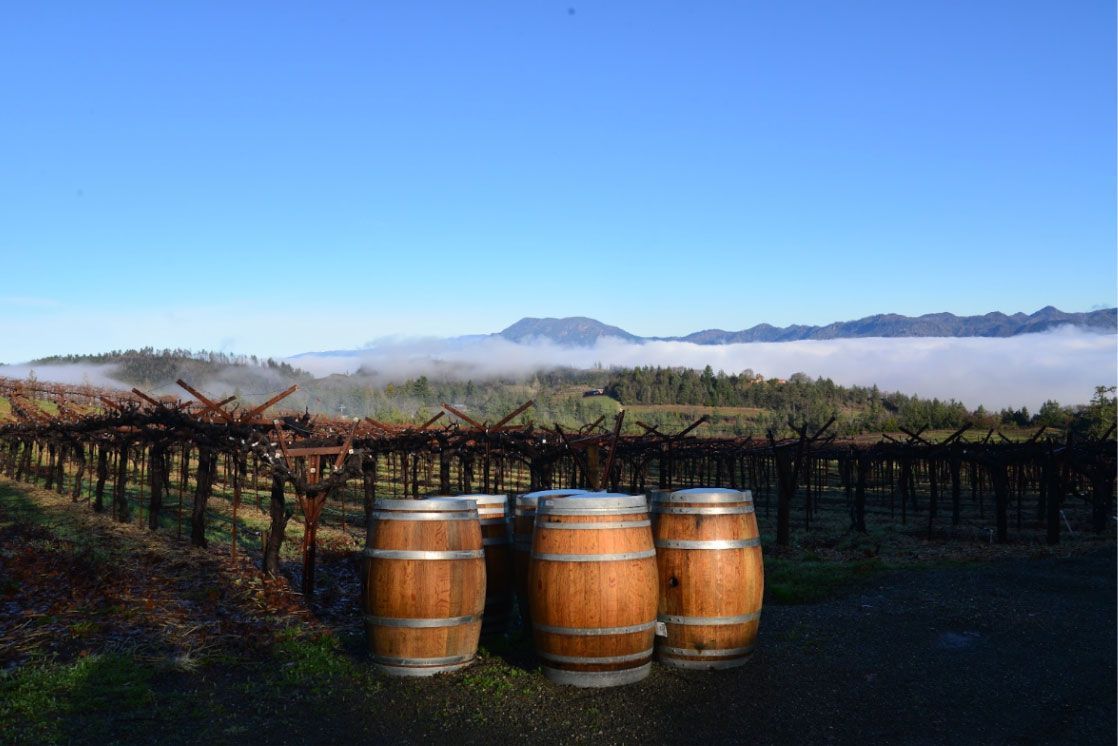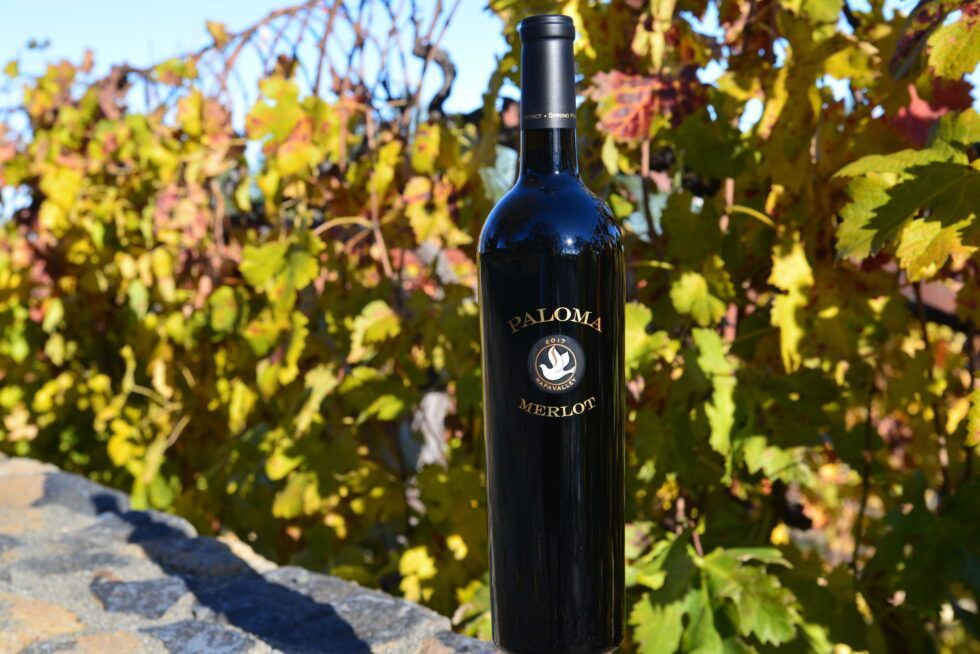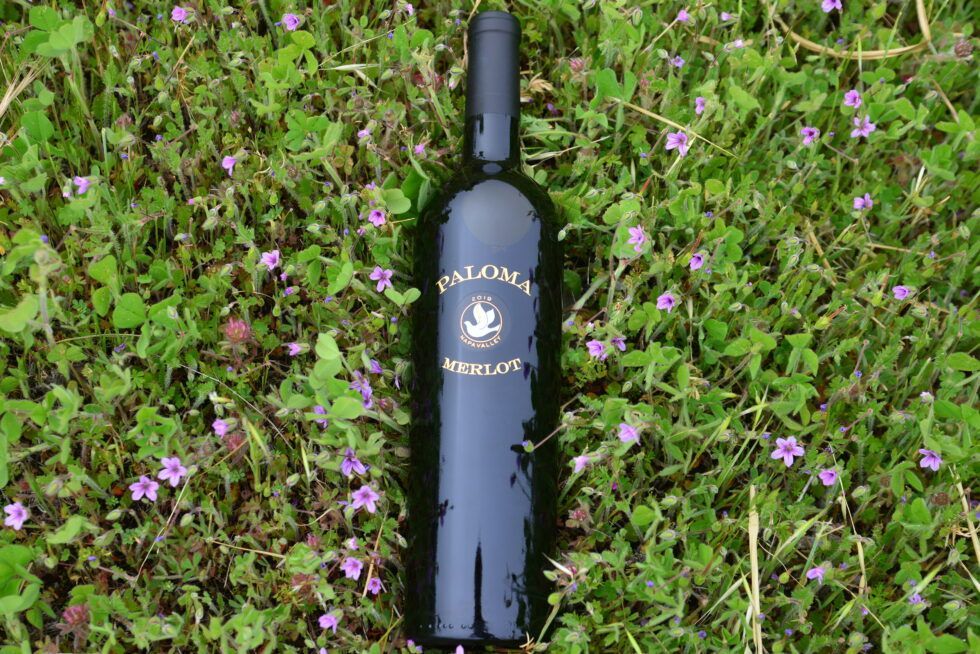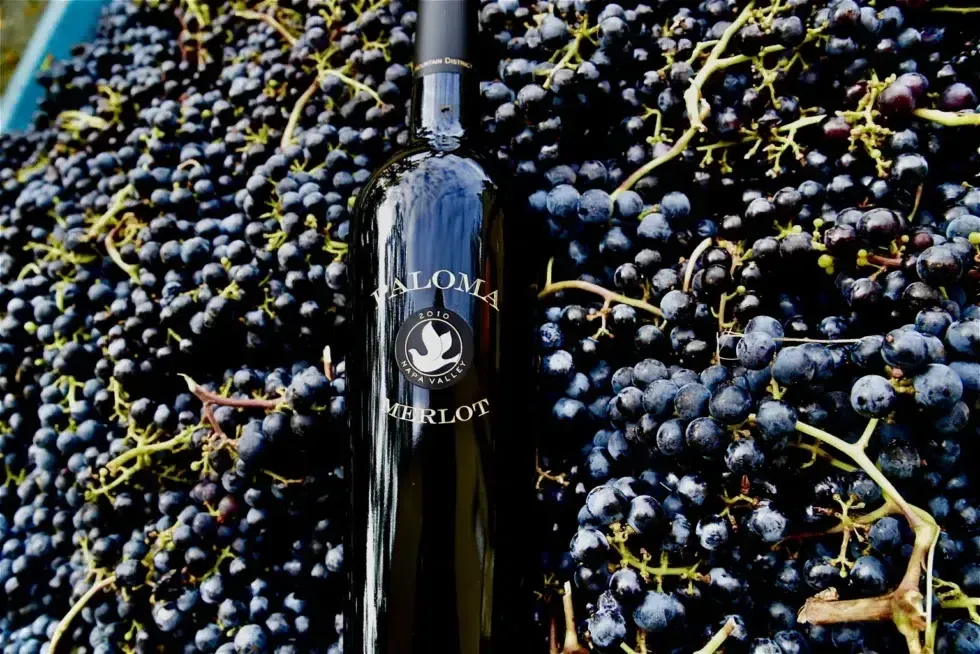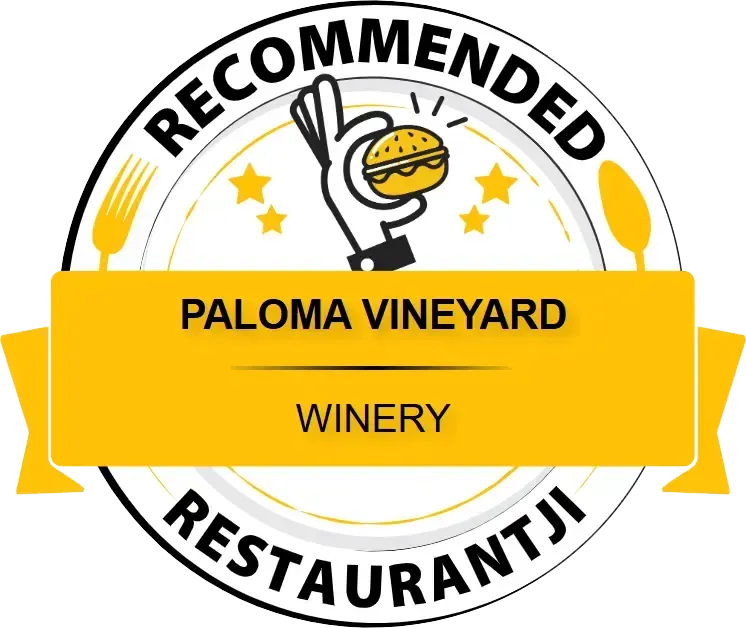Behind the Scenes: The Secrets to the Delicious Wines of Paloma Vineyard
June 2, 2023
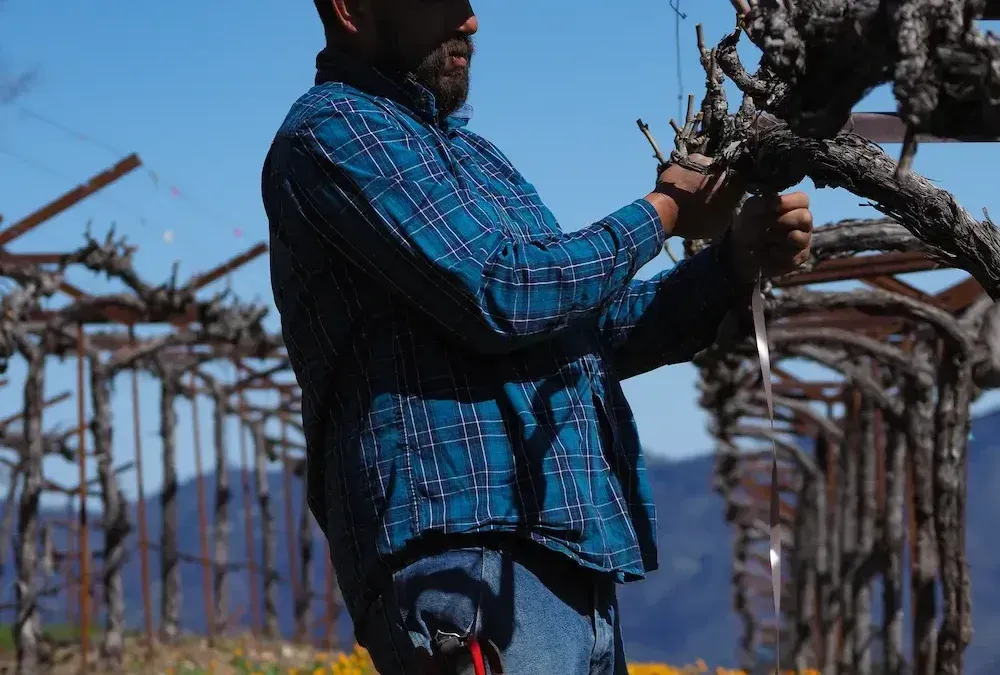
Merlots have always been Paloma’s focus. It all started with
Jim and Barbara Richards
investing in Duckhorn Vineyards in 1976. The couple started spending more time in the Napa Valley. The more time they spent here, the more the dream of having their own vineyard blossomed. So, when the property became available on Spring Mountain, they jumped in with both feet. Because the Richards loved Duckhorns’ Three Palms Vineyard Merlot, they chose it as their primary
grape selection . Ready to begin their second careers, or possibly their retirement project, the Richards set out to make their dream a reality through
quality farming .
How Paloma Vineyard Creates Its Award-Winning Wines
Farming Practices
Organic farming has never been the entire picture at
Paloma
. We focus on
sustainable practices , with an emphasis on
regenerative farming . Founder, Barbara Richards, spearheaded the farming of all 15 acres of the vineyard for over 30 years. She personally touched, nurtured, and claims to have named all 7,500 vines. For over 20 years, ten months out of the year Barbara was out in the vines. She pruned in winter, planted to expand the vineyard in spring, weeded, suckered, and hedged in spring and summer, and harvested in fall. The caring attention Barbara gave the vineyard was everything. Having been in the Navy she knew the value of hard work. Her hard work created a growing climate of healthy sustainable vines for future harvests. To this day, we choose to follow her lead by focusing on
quality farming and by using products and practices that increase the longevity and life of the vineyard for future generations and harvests to come.
Harvest
Our estate-grown vineyard started with such a caring intention to grow great grapes, that winemaking had no choice but to mirror that. Jim Richards learned everything he knew from a neighboring winery’s winemaker,
Robert Foley
. Jim shared Barbara’s same passion for creating a quality product. We continue to honor that ideal today. Our terraced vineyards range in elevation from 2,000 feet to 2,250 feet and sun exposures from south to north. This creates ripening pockets, so every harvest we hand-pick our grapes as they ripen at different times. Once the grapes are in the winery, we process and ferment each picked section of the vineyard independently. Throughout fermentation, we punch down (a flavor extraction technique) the grapes by hand three times a day for upwards of 10 days per pick. This can last well over a month some seasons. It makes us all extremely muscular!
Winemaking
Next, after fermentation, the wine is moved to the barrel. With Bob’s help, Jim came up with a simple and elegant winemaking process that he passed down to his son,
Sheldon Richards
, the second generation and current winemaker of Paloma. One key to this process is the subtle oak treatment. Jim and Barbara were adamant that oak should complement, not overwhelm the flavor profile of the wines. To this day, we continue to use one-third new French oak Nadalié barrels and two-thirds neutral French oak barrels during the aging process. The wine will then age for 18 months in those barrels, where it will be racked four to five times over that period. This gently extracts more flavor and helps develops the petal-like mouthfeel of Paloma wines. Finally, the wine is blended into the bottle and will be aged again for another two and a half years before it is released to you.
Secrets You Can Taste
Our
sustainable quality farming practices , combined with the
hand-picked and
hand-crafted techniques, and the spring mountain climate create the complexity behind Paloma’s wines. Sound intriguing? Come
book a tasting
with us up on spring mountain to experience these wines and talk to the winemaker yourself.
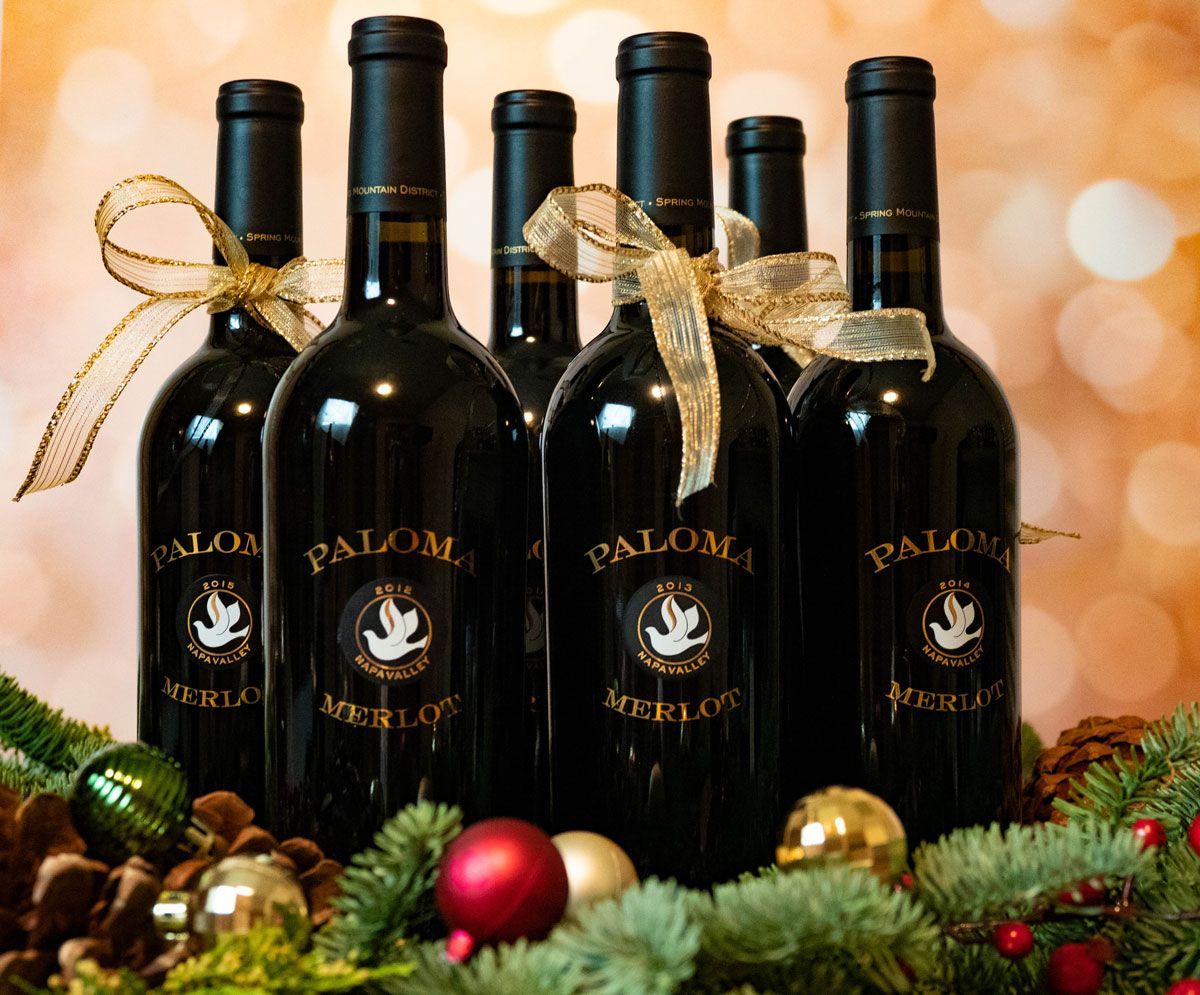
By caston
•
December 22, 2025
The holidays are a time of warmth, laughter, and lingering conversations around a table that feels just a little bit magical. At Paloma Vineyard , we believe that the right wine can turn a good holiday gathering into a deeply memorable one. Whether you’re cozying up by the fire or welcoming friends through your front door, choosing a holiday red that resonates with the season adds richness to every moment. Red wines, with their deep hues and comforting aromatics, often feel like the unofficial wine of cool nights and festive gatherings. This year, elevate your celebrations with selections that embody structure, balance, and that touch of elegance holiday hosts crave.
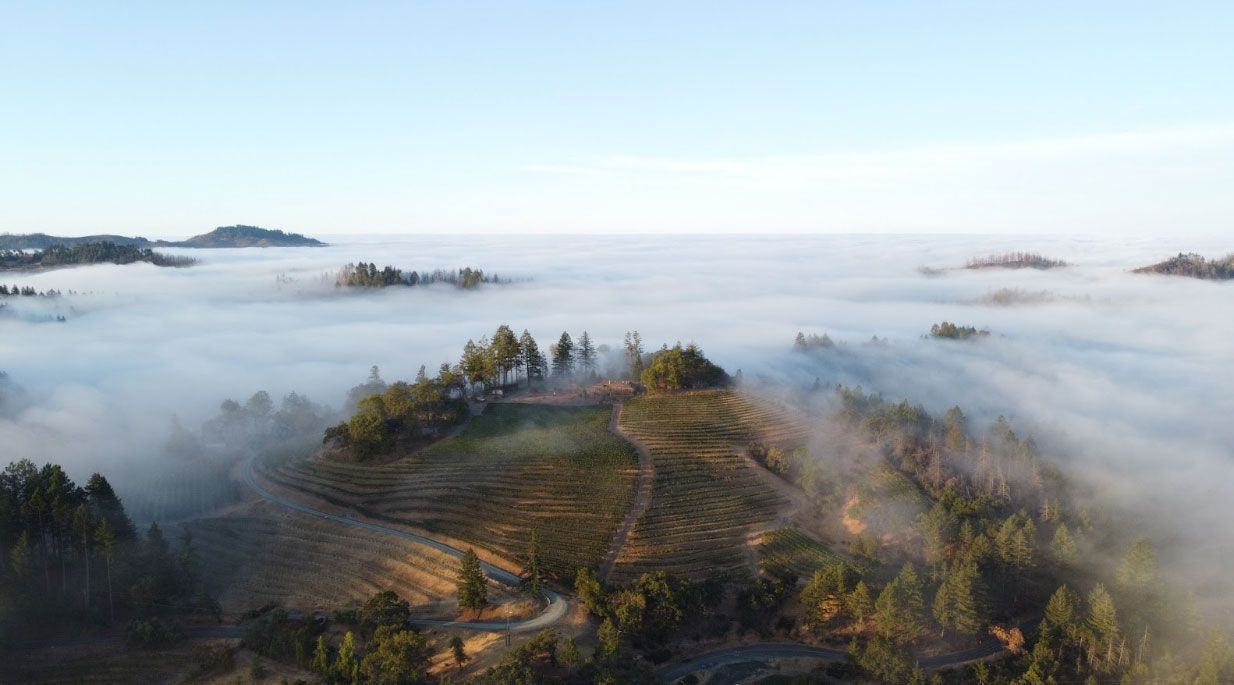
By caston
•
December 2, 2025
Nestled on the western slopes of the Mayacamas Mountains and overlooking the iconic Napa Valley, the Spring Mountain District AVA offers a truly elevated wine‑country experience. With vineyards planted on steep hillsides, above the valley floor, this mountain appellation is all about high altitude vineyards, dramatic terroir and a hospitality style grounded in family, craft and place.

By caston
•
October 21, 2025
Wine tasting is more than etiquette and ceremony. It’s an opportunity to listen to your palate — to discover what flavors resonate most with you, so that in later tastings or purchases, you can ask for “more of that. ” When you can name what you like, you unlock a more rewarding, deeper wine experience. Below is your refined guide to wine tasting etiquette — yes — but always in service of helping you tune in to your preferences.
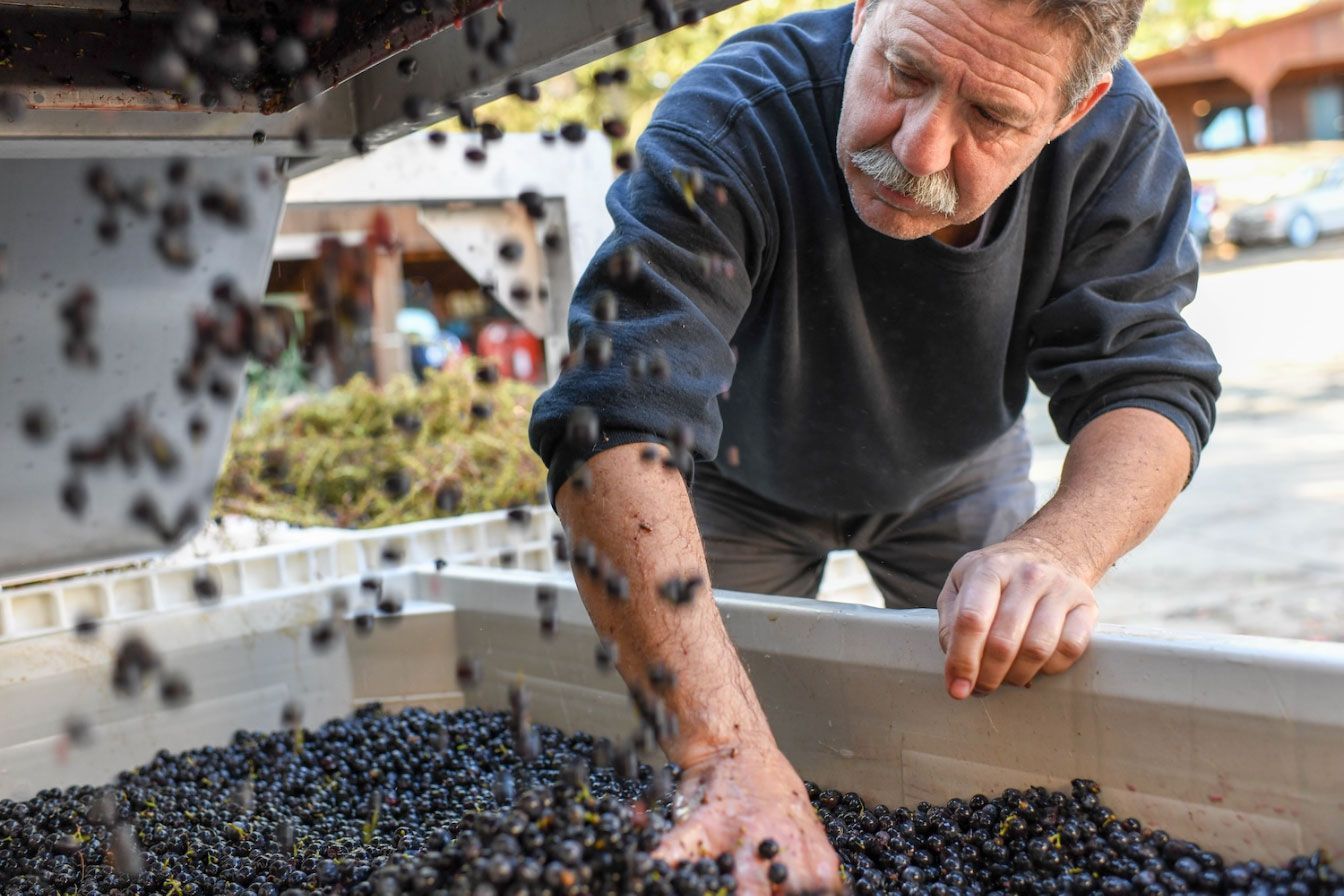
By caston
•
August 18, 2025
At Paloma, Merlot is the soul of our story. It is the grape that founders Jim & Barbara fell in love with on their journey to Spring Mountain. Picture this: it’s the late 1970s, and Barbara and Jim are visiting the Duckhorn vineyard, tasting their famed Three Palms Merlot. They lean into a sip and feel stirred—not just by the wine’s richness, but by its quiet elegance. That moment sparked something. They looked at each other and thought, “This is the wine we want to make. These are grapes we have to grow.” Before they even found the site, they had their hearts set on Merlot. By the time they found the raw land at the top of Spring Mountain, there was no changing their minds. Back then, planting Merlot at that elevation was almost unheard of—too cool, too risky. But they trusted their instincts and took the leap.
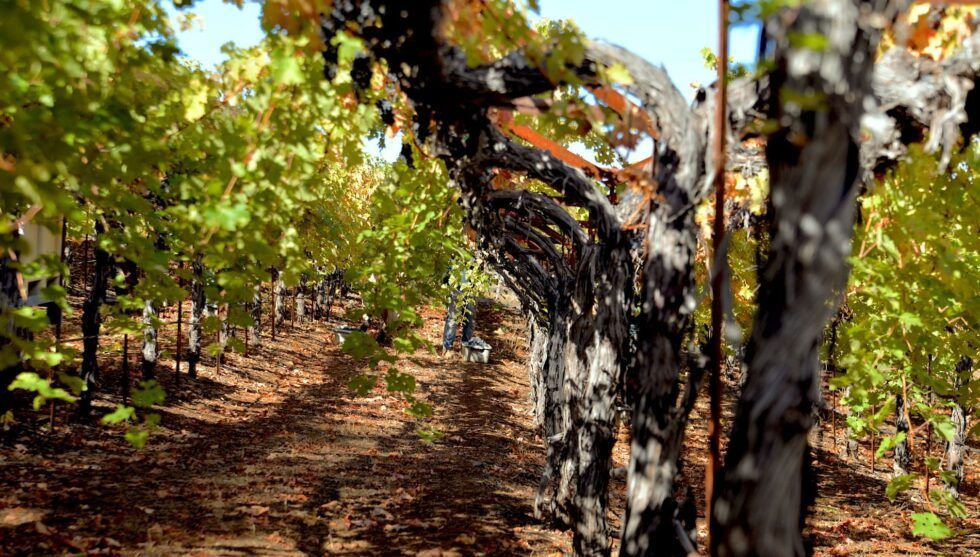
By WSI
•
March 26, 2025
At Paloma Vineyard, sustainability is more than just a practice—it’s the foundation of everything we do. Nestled on Napa Valley’s Spring Mountain, our small, family-run vineyard has been embracing sustainable and regenerative farming for over four decades. Every choice we make, from cover cropping to solar power, reflects our deep respect for the land and our commitment to producing exceptional wines that honor both our family legacy and the environment.

